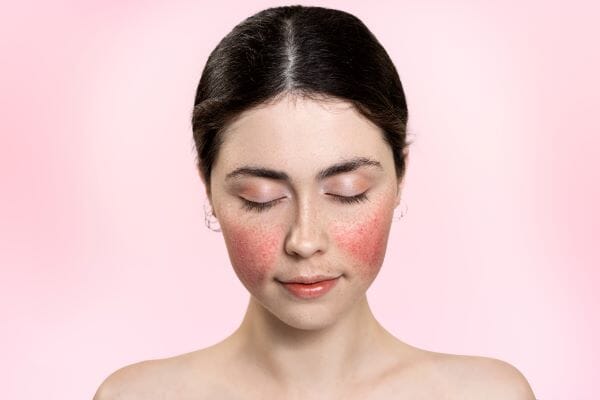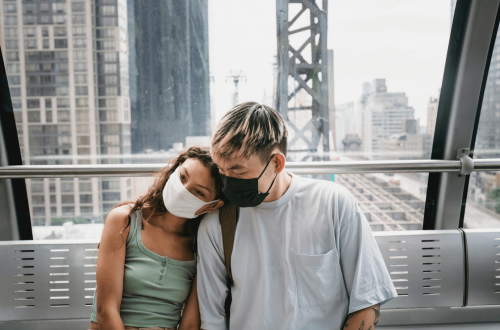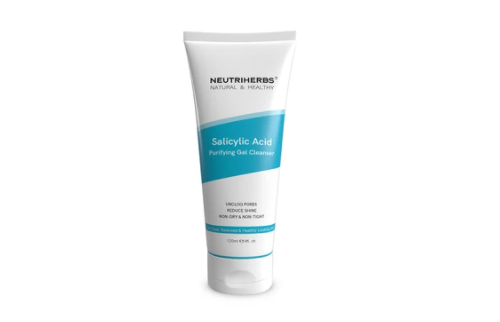
Rosacea: diagnosis and treatment
The diagnosis of rosacea is made by the attending dermatologist, who examines the inflamed areas of the skin closely (possibly also with a biopsy in the facial area or a blood test) and asks the patient about the course of the disease and the aggravating factors. Depending on the clinical picture, an appropriate decision is then made for long-term and acute therapy.
It is essential to exclude what is known as demodicosis, a disease that is similar to rosacea but is rarer. The skin changes here are primarily unilateral. Demodicosis is caused by a species of mite called Demodex that nests around the roots of the hair, leading to inflammatory change.
Treatment with medication
Treatment of rosacea is through medication and avoidance of factors that increase symptoms. Especially in the first stage, this avoidance is often sufficient as therapy. The following factors should be avoided:
- stress
- alcohol
- warm drinks
- spicy foods
- sun exposure
Brimonidine is often suitable for external treatment of facial redness and visible capillaries. The active ingredient has a vasoconstrictive effect, which reduces blood flow to the skin and reduces redness. However, the remedy is no longer adequate for more pronounced rosacea diseases.
Drugs containing the active ingredient metronidazole are most commonly used to treat rosacea. Metronidazole has anti-inflammatory and soothing effects on the skin. The active ingredient is also an antibiotic against infections in tablet form.
Another option is the active ingredient ivermectin. This works similarly to the other two active ingredients but kills most of the Demodex mites. In more advanced stages of the disease, additional treatment with tablets or infusions often helps. This is where antibiotics are usually used.
There are also other active ingredients, such as isotretinoin, which are particularly effective in the case of tetracycline intolerance or the treatment of rhinophyma. However, isotretinoin must not be given together with tetracycline, as this can lead to side effects. Pregnant women should avoid treatment with isotretinoin, which can lead to malformations in the developing child. Regular blood tests are also necessary during treatment with isotretinoin.
Essential for any treatment with medication: Those affected should observe how they tolerate them. Certain active ingredients, such as calcium antagonists, can increase facial redness. In such cases, consultation with your family doctor is necessary. In addition, those affected should not use cortisone-containing drugs over a more extended period.
In addition to drug treatment, those affected should pay attention to their skincare and avoid irritating soaps and creams. In most cases, preparations that contain glycerin or silicone oil are compatible. In addition, sufferers can use unique cosmetic products to cover the areas that contain green colour pigments. These optically weaken facial redness.
Non-drug treatment options
In addition to drug therapy, there are also non-drug treatments with lasers or surgery.
Laser treatment
Laser treatment is a non-drug therapy option. This is particularly suitable for red veins and can help to reduce redness and vasodilatation. The heat from the laser or the flash lamp destroys the capillaries. So far, however, there have only been a few studies on this therapy method. In addition, side effects such as scars, light and dark spots, or pain are possible. Statutory health insurance companies do not cover the costs of the treatment.
Surgical therapies
In the case of rhinophyma, surgical measures can help. Removals with a scalpel, laser or cryosurgery (cold treatment) with liquid nitrogen are standard.
Prevention Tips
Rosacea is a chronic disease and therefore requires long-term therapy. To protect the already sensitive and irritated skin, those affected should avoid factors that dilate the vessels. These include alcohol, stress, heat, sun exposure and spicy food.
Autogenic training, meditation or progressive muscle relaxation can be practical measures to prevent stress. Sports such as yoga, cycling and Nordic walking are also suitable, as they promote stress reduction and stimulate the cardiovascular system gently and moderately.
They should also access skin care products and cosmetics that are mild, soap-free and pH-neutral. Irritant substances such as menthol and camphor should be avoided. Creams, gels and emulsions containing fat, such as vaseline or paraffin, are also unsuitable for rosacea as they close the pores and promote reddening skin.
In principle, rosacea patients should always wear sun protection (against UV-A and UV-B) and avoid prolonged sunbathing.
If the skin burns and hurts, cold drinks and ice cubes will help, but also special care gels and compresses made from black tea. Thermal water also has a calming and cooling effect on inflamed skin and strengthens it through its minerals and selenium.
Care products with hyaluronic acid and masks with algae extract are suitable for returning moisture to the skin. If swelling occurs, facial massage can help reduce it.




